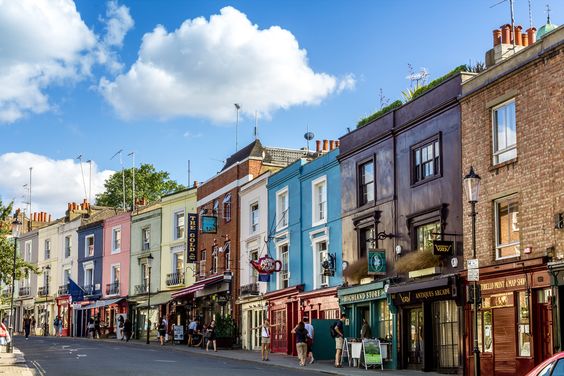The United States boasts a rich tapestry of universities, each offering unique strengths, academic approaches, and student experiences. Beyond the highly-ranked titans like MIT and Harvard, a vast array of institutions cater to diverse academic interests, learning styles, and budgetary considerations. This article delves into the beauty of this educational mosaic, exploring some of the compelling university options across the USA.
Public University Powerhouses:

Public universities offer a high-quality education at a relatively lower cost compared to private institutions. These universities often boast large student bodies, fostering a diverse and vibrant campus environment. Here are some prominent examples:
University of California System (UC System): This prestigious system comprises ten universities spread across California, each with its own areas of excellence. From UC Berkeley’s renowned programs in engineering and social sciences to UCLA’s strength in the arts and humanities, the UC system offers a diverse range of options for students seeking a well-rounded education within a vibrant state.
State Flagship Universities: Many states have flagship universities, considered their premier public institutions. These universities often receive significant state funding, allowing them to offer top-notch research facilities and attract renowned faculty. Examples include the University of Virginia (UVA) with its esteemed law school and the University of Michigan-Ann Arbor with its strong engineering and business programs.
Land-Grant Universities: Established through the Morrill Land-Grant College Act of 1862, land-grant universities emphasize access to higher education and practical application of knowledge. These universities often excel in agriculture, engineering, and science programs, with a strong focus on research and extension services. Examples include Iowa State University, a leader in agricultural science, and Purdue University, known for its engineering and technology programs.
Liberal Arts Colleges:

For students seeking a close-knit learning environment with a focus on undergraduate education, liberal arts colleges offer a compelling option. These smaller institutions often boast a lower student-to-faculty ratio, allowing for individualized attention and mentorship. Here are some exemplary institutions:
- The Claremont Colleges: Located in Claremont, California, this consortium of five liberal arts colleges (Pomona College, Scripps College, Claremont McKenna College, Pitzer College, and Harvey Mudd College) offers a unique opportunity for students to cross-register for classes and explore a diverse range of disciplines within a collaborative environment.
- Historically Black Colleges and Universities (HBCUs): HBCUs play a vital role in American higher education, providing a supportive and enriching environment for African American students. These institutions boast a rich history and culture, fostering a strong sense of community and offering specialized programs focused on African American history and culture. Examples include Howard University and Spelman College.
- Women’s Colleges: While co-educational institutions are the norm, women’s colleges offer a unique and empowering learning environment. These colleges provide a supportive space for women to pursue academic excellence and leadership opportunities. Examples include Smith College and Wellesley College.
Hidden Gems:

Beyond the well-known institutions, numerous “hidden gems” offer exceptional academic programs and a unique character. These institutions may be smaller, public or private, and offer a more intimate and personalized learning experience.
- Public Liberal Arts Colleges: Several public liberal arts colleges offer a high-quality education at a more affordable price point. Examples include The College of William & Mary in Virginia with its strong history program and The College of New Jersey (TCNJ) with its acclaimed science programs.
- Regional Universities: Many universities excel within their regions, focusing on specific industries or local needs. For instance, Texas A&M University is renowned for its engineering programs, while Drexel University in Philadelphia offers a distinctive co-operative education program, integrating classroom learning with professional internships.
Finding the Perfect Fit:
Choosing a university in the USA goes beyond just rankings and prestige. Here are some crucial factors to consider when navigating your college search:
Academic Focus: Identify your academic interests and research strengths offered by different universities.
Campus Culture: Consider the size of the student body, diversity of the student population, and overall campus atmosphere.
Location: Do you prefer a bustling urban environment, a scenic college town, or a location near a specific industry?
Financial Aid: Research scholarship and financial aid options offered by different schools.
Special Programs: Explore unique programs or opportunities offered by specific universities that align with your interests.
Remember, the “best” university is the one that best aligns with your individual needs, learning style, and future aspirations. Embrace the diverse landscape of American higher education and embark on a rewarding journey of discovery!